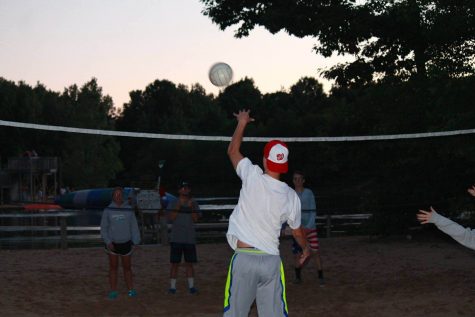Janae Start – Building Champions with Strength and Conditioning

Starting traditions is what helps to build a championship culture. At FHC, that tradition and commitment to getting better begins with head athletic trainer Janae Start. Entering her 6th year at FHC, Start ran plyometrics training in her first year emphasizing the right way to cut, run, and jump with your knees. In her second year, Start and head football coach Tim Rogers collaborated to bring FHC a solid offseason strength and conditioning program.
“Coach Rogers and I got together,” Start said. ”We talked about trying to implement something for all our athletes. The first year I was here we just did sports metrics; the following year is when we started strength and conditioning.”
The offseason program is more focused on strength training and building up the body to be the best that it can be when the season actually starts. Prior to Start starting at FHC, the school never had an offseason workout program for its athletes. She came to FHC with the intention to get the athletes to another level.
“The offseason is just to build strength,” Start said. “That’s one of our biggest components of offseason training. In the offseason you’re really looking to improve mechanics and improve your strength base.”
With the strength and conditioning program running smoothly, Start is given the opportunity to make sure the athletes are doing things the right way, to reduce the risk of injury.
“The proper mechanics is the biggest thing,” she said. “A lot of athletes don’t have that base of knowledge if they haven’t taken the courses.”
Start has seen the positive results of strength and conditioning in her time at FHC. She has kept count of the amount of season-ending injuries.
“I’ve tracked the differences in season-ending injuries,” Start said. “[Season-ending injuries] have definitely decreased pretty drastically within the last three years. Even after year one, we could see a slight decrease in those kind of injuries.”
Last year also marks the first year the strength and conditioning program went year round, rather than just the offseason. The change was made to further decrease injuries and keep FHC’s athletes at a high level.
“At first in the fall I saw maybe 15 to 20 kids in the offseason,” Start said. “Then when the winter hit, I had about 60 kids show up. So students definitely bought into the program. Students were understanding that this was very important, especially right before they start their actual in-season training. That’s when I saw my largest numbers.”
The in-season sessions are only two sessions a week for thirty minutes each. Like the offseason program, the sessions are more oriented toward strength.
“The in-season training is mainly composed of strength-based training,” she said. “Because all of the other agility and conditioning portions are usually addressed at practices.”
The athletic programs here at FHC are being put in the best positions to succeed thanks to the efforts put forth by Start. The offseason and in-season programs allow the athletes to improve athleticism, stay in shape, and reduce the risk of injury.
“During in-season training, we’re looking to gear toward more maintenance,” Start said. “Keeping that offseason strength base and keeping kids healthy throughout the season is the biggest thing.”

in his first year on The Central Trend staff, Kyle is one of the new sports reporters here at FHC. Kyle's favorite type of writing is sports reviews and...
























































































